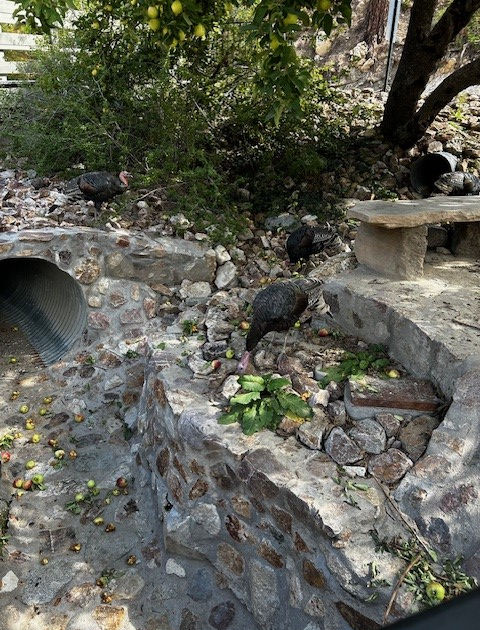Phone: 520.351.3351
Road Conditions: 520.351.3351
NEW YEAR'S EVE LITURGY AT 4:00 P.M.
Catholic Liturgy/Mass
Tuesday Noon
Saturday 4 p.m.
Everyone on the Mountain is heading to the Shrine!!!
BYZANTINE CATHOLIC LITURGY at THE SHRINE:
TUESDAYS AT NOON AND SATURDAYS AT 4PM
A note about our Liturgy: Our Divine Liturgy (Mass) is a very ancient form of worship, unchanged for thousands of years in the Christian East, and will not look like your regular Sunday Mass. However, this form of worship at the Shrine is in full communion with the Pope and fulfills the Catholic Sunday Obligation. The proper name for this form of worship is called the 'Divine Liturgy.'
In fact, our Holy Father Pope Leo XIV just celebrated a "Jubilee of the Eastern Churches" in May 2025 — honoring all Christians who celebrate the Divine Liturgy. Come worship God with us!

Fr. Diodoro
ABOUT THE SHRINE
We seek to further the mission of Mary, the Theotokos, at the Mary Undoer of Knots Shrine located atop Mount Lemmon, Arizona by drawing people to the Beauty and Light of our Lord, Jesus Christ.
We do this by...
Inviting day-visitors to view the awesome beauty of the Shrine's Byzantine Catholic architecture, iconography, and spiritual openness to Mary's intercession.
Celebrating America's history of freedom with our iconic Revere Bell, pointing to the true freedom given by God.
Providing overnight self-guided retreats in our beautiful Shrine cabin called the 'Poustinia'.
GOT QUESTIONS? SEND AN EMAIL TO CATHY KINGHORN, SHRINE COFOUNDER, TO EXPLORE DAY TRIPS AND OVERNIGHT STAYS! CLICK HERE
THE POUSTINIA EXPERIENCE
OVERNIGHT STAY AT THE SHRINE

Allow God to speak to your heart in an immersive retreat experience by staying at least 2 nights atop beautiful Mt. Lemmon in our shrine lodging.
This is an experience you will never forget, and you'll be glad that you said 'Yes' to God's call to inspire and transform you.
Explore the Poustinia today!
Shrine interior

Make life's milestones unforgettable by celebrating baptisms, engagements, and more at the Shrine.
The Shrine also features an open-air Ramada with commemorative bricks for all of your loved ones.
Stay at the Shrine's "Poustinia," — or just come for the day — and celebrate the Divine Liturgy (Mass), and pray at our Ramada, Baptistry, and across the entire Shrine's beautiful campus for an experience that you will never forget!
Thought of the Day
Friends, in the Gospel, Jesus teaches us to approach wealth with wisdom. Let me quote a sermon of St. John Chrysostom on the right approach to money:
“Those who love money are fierce in the pursuit of it, like wild animals pursuing their prey. They betray, cheat, or exploit their closest friend when there is gold and silver to be gained. They learn to make their consciences as numb as fingers on a cold day. Their eyes become blind to the suffering they cause, and their ears deaf to the cries of those whose lives are ruined by them.”
Those are strong words, and they shook the people at the time who heard them. And they shake us today. But can you hear he’s speaking in the tones of Jesus? What’s the ground of all this for John Chrysostom? Why does he say it? It’s very clear. Because everything we have—our bodies, our life, our breath, our minds, our accomplishments, and, yes, our wealth—is a sheer gift given to us by a generous God, and, therefore, it ought never to be hoarded for our own purposes but always used for God’s purposes.
--Bishop Robert Barron























